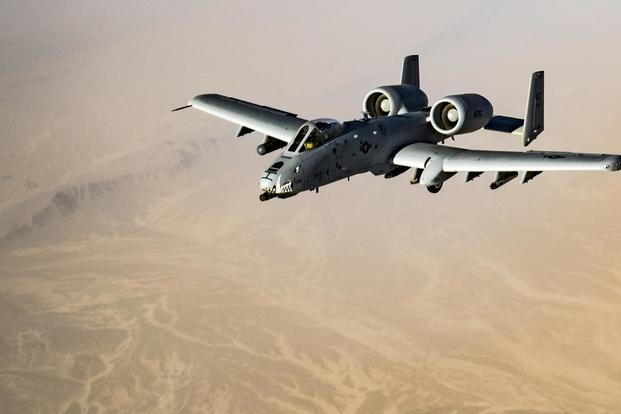This article by Jared Keller originally appeared on Task & Purpose, a digital news and culture publication dedicated to military and veterans issues.
The Air Force may be desperate to retire a significant chunk of its A-10 Thunderbolt II fleet, but lawmakers have other ideas.
The service sought to retire 44 A-10 "Warthogs," or three squadrons worth, of the service's total fleet of 281 ground attack aircraft as part of its fiscal year 2021 budget request.
But unfortunately for the service, Congress has stipulated in this year's 2021 National Defense Authorization Act — which is currently headed to President Donald Trump's desk — that no defense funds can be used to divest or retire any A-10s in the fleet.
The legislation "prohibits the divestment of aircraft until the minima are reached to ensure that [the] Air Force can meet [National Defense Strategy] and combatant command requirements," according to the Senate version of the NDAA.
First added to the Air Force inventory back in 1976, this isn't the first time that the Air Force has sought to reduce its fleet of the beloved A-10 aircraft in the last several years.
Indeed, last year's NDAA included full funding for Warthog upgrades, including a broad re-winging effort, rather than ground the aging airframes.
This year's effort to preserve the current A-10 fleet comes after the Air Force completed installing new wings on 173 of the service's existing aircraft as part of a Boeing contract signed way back in 2007.
Boeing subsequently locked down a $999 million contract to continue building the replacement wings necessary to keep the service's remaining 100-plus A-10s flying into the early 2030s, as Defense News reported at the time.
The service's A-10s are also currently in the middle of a major effort to enhance the already-beastly lethality of the close air support workhorse as part of the Common Fleet Initiative (CFI) initiated in August 2018.
Those enhancements include a new high-definition cockpit display to improve the A-10's ability to find and fix targets from greater distances, jam-resistant GPS, an improved communication suite, and integrating the GBU-39 Small Diameter Bomb (SDB I) on all A-10 airframes, as Task & Purpose previously reported.
In addition, military aviation magazine Combat Aircraft reported at the time new "multi-target engagement capability" will make the A-10 "theoretically … able to target 18 weapons individually" while hauling four SDBs on a single hardpoint.
"GBU-39 munitions have proven to be highly-desired weapons in ongoing conflicts, and the addition of this weapon to the A-10's arsenal will greatly improve the flexibility of ground commanders," Alexi Worley, an Air Combat Command spokesman, told Task & Purpose at the time.
"Adding the GBU-39 will continue efforts to keep the A-10 relevant in ongoing and future conflicts, where versatility in weaponeering is critical to meeting ground commander needs."
More articles from Task & Purpose:
• Lawmakers demand answers over ‘dramatic increase' of COVID-19 cases at Fort Bliss
• Here are all the weapons and gear coming to soldiers and Marines in 2021
• Airmen celebrate with memes after fitness test gets delayed to 2021














